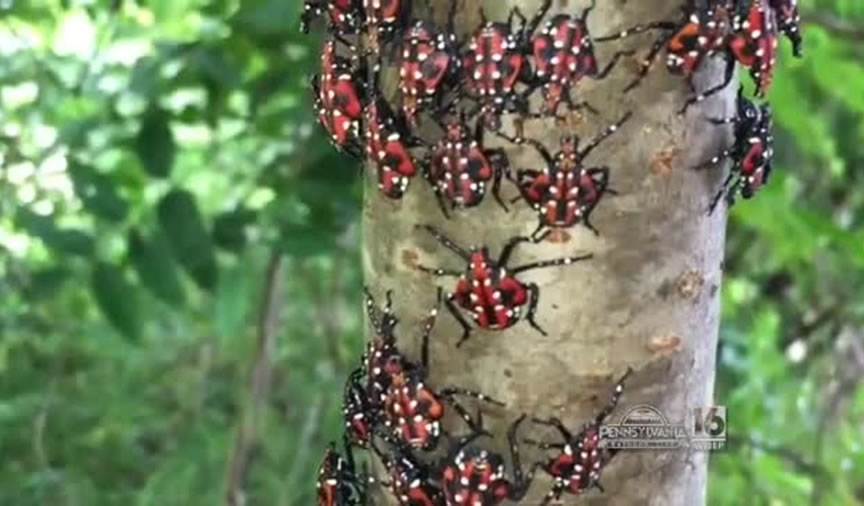24/7 Emergency Service
24/7 Emergency Service

The spotted lanternfly is an invasive pest native to regions in China, India, and Vietnam, but it has found its way to the United States. In 2014, it was found in Pennsylvania and has since spread to nearly a dozen states. This sap-feeding planthopper destroys fruit crops, trees, and plants and leaves behind a sugary substance called honeydew. The honeydew, in turn, encourages the growth of black sooty mold that further damages plants and trees. It is important that you report spotted lanternfly infestations to your local agricultural department. But, what can you do to get rid of the critters? Southern Star Tree Service, your local source for trusted arborist and tree services is ready to help.
Identifying the Spotted Lanternfly
The adult spotted lanternfly is approximately an inch long and half an inch wide at rest. The pest has four wings, but they hop from plant to plant more than they fly. The forewings are gray with black spots; the respective wing tips are patterned with tiny black blocks outline in gray. The hind wings, meanwhile, have a patch of red as well as a patch of white on each wing with the tip of each wing being black. Its legs and head are black while its abdomen is yellow. Don’t let this critter’s intriguing colors fool you though: they are a colorful cause for worry.
Life Cycle
Each generation of the spotted lanternfly lives for about a year but leaves behind egg masses containing thirty to fifty eggs per mass. These masses are laid on hard surfaces generally found below ten feet from surface-level. The eggs are covered with a mud-like protection. The spotted lanternfly goes through four nymphal stages with only the last stage easy to detect thanks to its red patches and ability to fly. The adults emerge in the middle of summer around July and are active until winter.
Managing Spotted Lanternflies
Join the battle to eliminate spotted lanternflies by practicing mindfulness. Here are the steps for managing spotted lanternflies:
Call the Professionals
If you prefer to have an ISA-certified arborist take care of that spotted lanternfly infestation, then call Southern Star Tree Service to consult with a professional and schedule a flexible appointment.
08 July, 2025
Are you looking to undertake a new housing construction in a flood-prone area? If so, incorporating stormwater retention ponds or detention basins is crucial to manage flood risk. A stormwater retention ...
Read More02 July, 2025
Summer is around the corner, meaning it is time to engage in relaxing outdoor activities like swimming. As you plan to kick back, don’t forget to maintain your trees. Although the hot weather may not ...
Read More